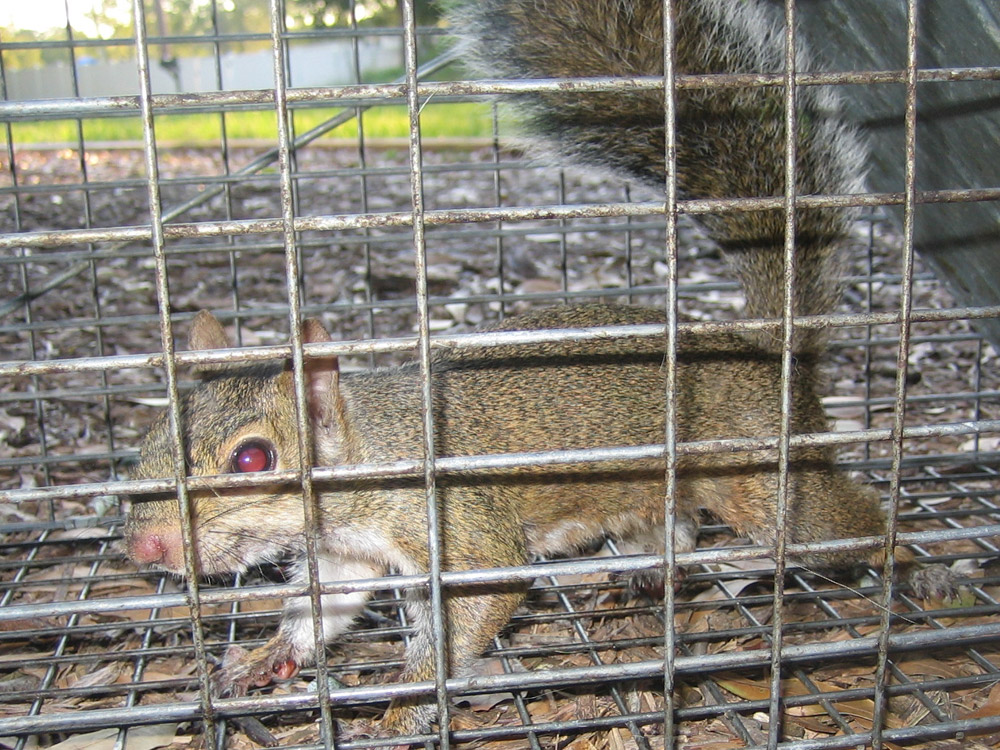
 |
Squirrel caught in a cage trap |
 |
Anyways getting on with the story, I found this red-eyed eastern gray squirrel in a building and live-trapped it using one of my cage traps. Catching a squirrel is pretty easy mostly because of their love for almost anything edible, especially if it contains nuts. Normally, I use peanuts, peanut butter or some kind of seeds to lure them into the traps. The best areas to place the trap is to observe the entry and exit points of the squirrel, which makes its path more obvious.
Much like opossums, squirrels are most likely to be found in a house’s attic and it usually turns out that the squirrel’s entry point was a hole in the eaves or soffit. The one thing that you should be careful about when catching a squirrel is that the flap which the squirrel uses to enter should be lightweight so that it can easily be pushed by a little critter like squirrel. The cage does not need to be too heavy-duty since squirrels do not have the strength to break them apart.
After catching this squirrel, I thought it would be best if I let it go into the wild where it would find a tree hollow to spend the rest of its days.